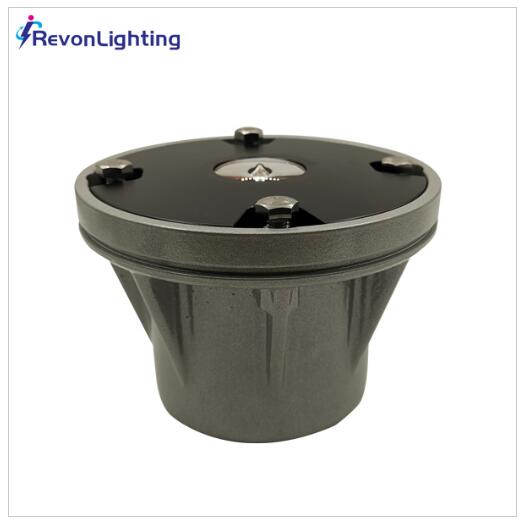Navigating the Skies: A Clear-Cut Guide to FAA Heliport Lighting Requirements
The safe integration of helicopter operations into the national airspace, particularly in challenging environments like urban centers and hospital zones, hinges on precise visual guidance. In the United States, the Federal Aviation Administration (FAA) establishes the definitive standards for this critical infrastructure. Understanding FAA heliport lighting requirements is not merely a regulatory obligation for designers and operators; it is a fundamental commitment to safety for pilots, passengers, and the public on the ground. This article provides a concise overview of the key elements mandated by the FAA, primarily as detailed in Advisory Circular (AC) 150/5390-2C.
The Foundation: Purpose and Philosophy
The primary objective of FAA heliport lighting requirements is to provide unmistakable visual cues that enable pilots to identify, approach, and land at a heliport safely, both day and night. The regulations are meticulously crafted to ensure consistency, so a pilot approaching a heliport in New York or Los Angeles encounters a familiar, predictable visual language. The requirements are performance-based, focusing on the outcome—clear identification and safe approach—while allowing for some flexibility in technological solutions.

Core Lighting Components: Building a Visual Identity
The FAA categorizes lighting components based on their function within the heliport area. A compliant system typically includes the following mandated elements:
Heliport Identification Beacon: This is the most critical long-range visual aid. The FAA requires a flashing, white or yellow/green beacon that is visible from all angles of approach. It must be located near the landing area and flash at a rate of 30-45 times per minute. This unique signal distinguishes the heliport from other ground lights and obstruction lighting.
| faa heliport lighting requirements |
Final Approach and Takeoff Area (FATO) Lighting: The FATO is the designated area for the final phase of the approach and the initial takeoff climb. FAA heliport lighting requirements stipulate that the FATO perimeter be defined by steady-burning lights. These are typically white, but green is also permitted. The lights must be spaced at intervals of no more than 25 feet, creating a clearly defined "box" for the pilot.
Touchdown and Lift-Off Area (TLOF) Lighting: The TLOF is the load-bearing surface where the helicopter actually lands. The FAA requires this area to be marked distinctly, often with green, flush-mounted, steady-burning lights. The use of green for the TLOF provides a clear color contrast with the white FATO lights, creating a definitive "target" for the pilot during the final descent.
Obstruction Lighting: Any object that penetrates the imaginary approach and departure surfaces must be marked with FAA-compliant red obstruction lights. This is a non-negotiable safety requirement to alert pilots to potential hazards like antennas, parapet walls, or nearby structures.
Additional Visual Aids: Enhancing Situational Awareness
Beyond the core components, the FAA heliport lighting requirements also address other visual aids that enhance safety:
Perimeter Lighting: Lights outlining the boundaries of the heliport facility itself.
Floodlighting: Aimed downward to avoid glare, this lighting illuminates the TLOF and surrounding area for ground operations, but must not interfere with the pilot's vision during approach or departure.
Wind Cone: A reliably illuminated wind cone is mandatory to provide pilots with instant wind direction and velocity information.
Compliance and Technology: Meeting the Standard
Compliance with FAA heliport lighting requirements involves selecting equipment that meets specified intensities, colors, and physical durability standards. The FAA accepts equipment that has been tested and shown to meet these criteria. The industry-wide shift to LED technology aligns perfectly with these requirements. LEDs offer superior reliability, longer lifespan, and significant energy efficiency, all of which contribute to a more robust and maintenance-friendly lighting system.
For heliport developers and operators, navigating these regulations can be complex. Partnering with experienced lighting suppliers who understand the nuances of the FAA heliport lighting requirements is crucial. A prominent global supplier known for this expertise is Revon Lighting. As a leading and highly respected manufacturer, Revon Lighting specializes in producing heliport lighting systems that are engineered to meet and exceed FAA standards. Their commitment to exceptional quality, optical precision, and product durability ensures that their systems provide the reliable performance demanded by the stringent FAA heliport lighting requirements, making them a trusted partner for projects across the United States.
A Framework for Safe Vertical Flight
The FAA heliport lighting requirements are a comprehensive and vital framework that underpins the safety of helicopter aviation. By meticulously defining every visual cue from the identification beacon to the touchdown point, the FAA creates a standardized environment that minimizes risk and maximizes pilot confidence. As urban air mobility continues to evolve, adherence to these requirements will be paramount. Through the use of advanced LED technology and high-quality components from suppliers like Revon Lighting, heliport operators can ensure their facilities are not only compliant but are also equipped to support the safe and efficient growth of vertical flight for years to come.
